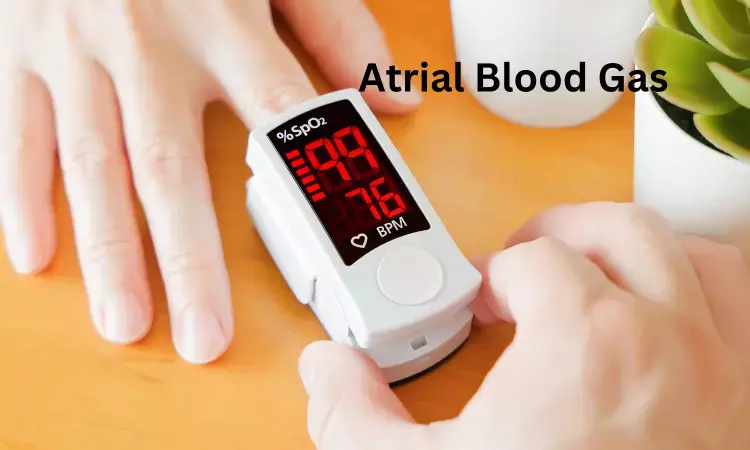- Home
- Medical news & Guidelines
- Anesthesiology
- Cardiology and CTVS
- Critical Care
- Dentistry
- Dermatology
- Diabetes and Endocrinology
- ENT
- Gastroenterology
- Medicine
- Nephrology
- Neurology
- Obstretics-Gynaecology
- Oncology
- Ophthalmology
- Orthopaedics
- Pediatrics-Neonatology
- Psychiatry
- Pulmonology
- Radiology
- Surgery
- Urology
- Laboratory Medicine
- Diet
- Nursing
- Paramedical
- Physiotherapy
- Health news
- Fact Check
- Bone Health Fact Check
- Brain Health Fact Check
- Cancer Related Fact Check
- Child Care Fact Check
- Dental and oral health fact check
- Diabetes and metabolic health fact check
- Diet and Nutrition Fact Check
- Eye and ENT Care Fact Check
- Fitness fact check
- Gut health fact check
- Heart health fact check
- Kidney health fact check
- Medical education fact check
- Men's health fact check
- Respiratory fact check
- Skin and hair care fact check
- Vaccine and Immunization fact check
- Women's health fact check
- AYUSH
- State News
- Andaman and Nicobar Islands
- Andhra Pradesh
- Arunachal Pradesh
- Assam
- Bihar
- Chandigarh
- Chattisgarh
- Dadra and Nagar Haveli
- Daman and Diu
- Delhi
- Goa
- Gujarat
- Haryana
- Himachal Pradesh
- Jammu & Kashmir
- Jharkhand
- Karnataka
- Kerala
- Ladakh
- Lakshadweep
- Madhya Pradesh
- Maharashtra
- Manipur
- Meghalaya
- Mizoram
- Nagaland
- Odisha
- Puducherry
- Punjab
- Rajasthan
- Sikkim
- Tamil Nadu
- Telangana
- Tripura
- Uttar Pradesh
- Uttrakhand
- West Bengal
- Medical Education
- Industry
Arterial blood gas analysis must for detecting severe resting hypoxemia in COPD in addition to pulse oximetry

Chronic obstructive pulmonary disease (COPD) is globally the third leading cause of death, causing 3.23 million deaths in 2019.
Most feasible way to measure oxygen saturation is by pulse oximetry (SpO2). The Global Initiative for Chronic Obstructive Lung Disease (GOLD) guidelines recommend evaluation with arterial blood gas (ABG) analysis if SpO2 is ⩽92%.
This recommendation has not been evaluated in stable outpatients with COPD undergoing testing for Long-Term Oxygen Therapy (LTOT) to evaluate whether the performance of SpO2 compared with ABG analysis of PaO2 and arterial oxygen saturation (SaO2) to detect severe resting hypoxemia in patients with COPD a team of researchers conducted a study.
The study published in Annals of American Thoracic Society, reports that SpO2 alone may have a high false-negative (FN) rate for detecting severe resting hypoxemia in COPD patients being assessed for long-term oxygen therapy (LTOT). The GOLD recommends reflex measurement of PaO2 through ABG analysis. This is crucial, particularly for active smokers, and it is advisable to use a cutoff higher than SpO2 ⩽92%.
Researchers conducted a Retrospective analysis of paired SpO2 and ABG values from stable outpatients with COPD who underwent LTOT assessment in a single center. They calculated false negatives (FNs) as an SpO2 >88% or >89% in the presence of pulmonary hypertension with a PaO2 ⩽55 mm Hg or ⩽59 mm Hg in the presence of pulmonary hypertension. Test performance was assessed using receiver operating characteristic (ROC) analysis, intraclass correlation coefficient (ICC), test bias, precision, and accuracy root-mean-square (Arms). An adjusted multivariate analysis was used to evaluate factors affecting SpO2 bias.
The key findings of the study are
• A total of 518 patients were included, the prevalence of severe resting hypoxemia was 74 (14.3%), with 52 missed by SpO2 (FN, 10%), including 13 (2.5%) with an SpO2 > 92% (occult hypoxemia).
• FNs and occult hypoxemia in Black patients were 9% and 1.5%, respectively, and were 13% and 5%, respectively, among active smokers.
• The correlation between SpO2 and SaO2 was acceptable (ICC = 0.78; 95% confidence interval, 0.74–0.81); and the bias of SpO2 was 0.45%, with a precision of 2.6 (−4.65 to +5.55%) and Arms of 2.59.
• These measurements were similar in Black patients, but in active smokers, correlation was lower and bias showed greater overestimation of SpO2.
• ROC analysis suggests that the optimal SpO2 cutoff to warrant LTOT evaluation by ABG analysis is ⩽94%.
In conclusion, “SpO2 as the only measure of oxygenation carries a high FN rate in detecting severe resting hypoxemia in patients with COPD undergoing evaluation for LTOT. Reflex measurement of PaO2 by ABG analysis should be used as recommended by GOLD, ideally at a cutoff higher than an SpO2 ⩽92%, especially in active smokers.”
Reference: Brian Garnet , Rodrigo Diaz-Lankenau , Elie Jean et al ; Accuracy of Pulse Oximetry for Long-Term Oxygen Therapy Assessment in Chronic Obstructive Pulmonary Disease; Ann. Of Am. Thor. Soc. DOI:https://doi.org/10.1513/AnnalsATS.202209-837OC
MSc. Neuroscience
Niveditha Subramani a MSc. Neuroscience (Faculty of Medicine) graduate from University of Madras, Chennai. Ambitious in Neuro research having worked in motor diseases and neuron apoptosis is interested in more of new upcoming research and their advancement in field of medicine. She has an engrossed skill towards writing and her roles at Medical dialogue include Sr. Content writer. Her news covers new discoveries and updates in field of medicine. She can be reached at editorial@medicaldialogues.in
Dr Kamal Kant Kohli-MBBS, DTCD- a chest specialist with more than 30 years of practice and a flair for writing clinical articles, Dr Kamal Kant Kohli joined Medical Dialogues as a Chief Editor of Medical News. Besides writing articles, as an editor, he proofreads and verifies all the medical content published on Medical Dialogues including those coming from journals, studies,medical conferences,guidelines etc. Email: drkohli@medicaldialogues.in. Contact no. 011-43720751


